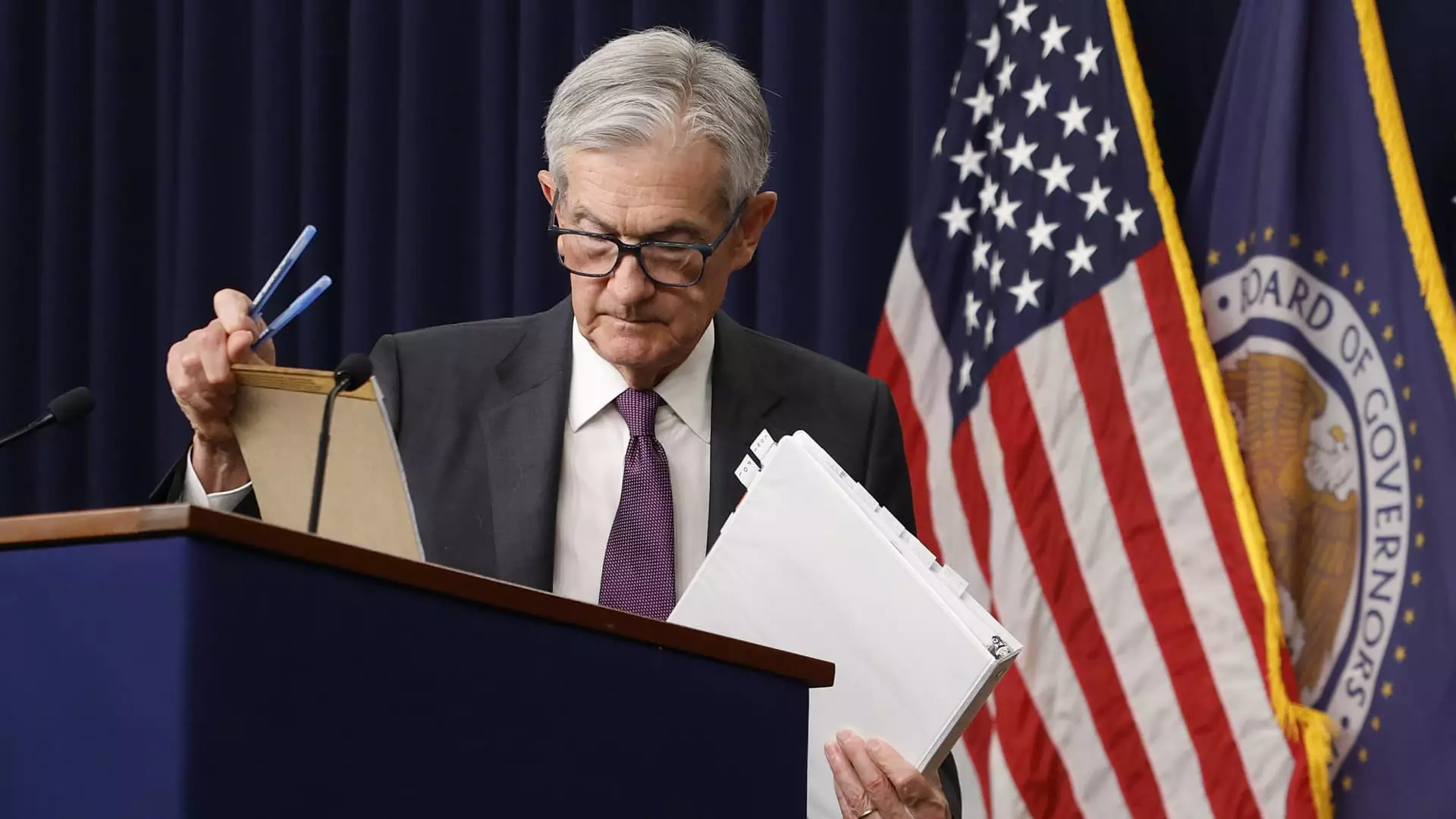Federal Reserve Chair Jerome Powell recently ignited discussions around an increasingly complex economic climate characterized by the unpredictable interplay of inflation and growth. During his speech before the Economic Club of Chicago, Powell articulated a concerning predicament that the central bank faces: the dual mandate of controlling inflation while fostering economic growth may soon become incompatible. Such tensions exemplify the precarious position in which policymakers find themselves, especially as global uncertainties, particularly stemming from President Trump’s tariffs, loom heavily over economic forecasts.
The implications of tariffs as an economic policy tool are deeply troubling. Historically, tariffs act almost like a fiscal strain, introducing costs that invariably trickle down to consumers. While Powell noted that there had been little historical correlation between tariffs and inflation, the sheer scale of current tariff implementations could lead to an altogether different outcome. The anticipated spikes in inflation, as Powell indicated, pose significant risks not only from a price stability perspective but also for broader economic growth. If we follow Powell’s reasoning, the stakes are much higher than simple market fluctuations; we are talking about the potential emergence of stagnation in a once-vibrant economy.
An Economic Tightrope Walk
In his remarks, Powell hinted at a possible scenario where the Federal Reserve might be forced to make an unpalatable choice: should the Fed tighten interest rates in response to rising inflation, potentially stifling economic growth, or should it loosen them to support growth while risking even higher prices? This tightrope act illustrates the complexities that economic recovery strategies must contend with in the face of dual challenges. If we consider these incongruent objectives, we see a possible outcome where policymakers are hamstrung, only able to react rather than proactively manage the economy.
For liberals who champion social equity as a cornerstone of economic policy, this dilemma represents more than just numbers on a spreadsheet. It underscores a fundamental critique of the current political economy that has led to ballooning wealth disparities. The notion that those who are already struggling may bear the brunt of inflationary pressures while potent corporations reap the fiscal benefits creates a troubling paradox: economic policies are tilting in favor of the affluent under the guise of protecting “free market” principles.
Uncertain Economic Predictions and Market Reactions
Interestingly, Powell did not reveal his own projections for future interest rates, but he did suggest the Fed was well-positioned to await clearer indicators before making adjustments. This stance came as a shock to many in the financial markets, as uncertainty tends to foster instability; as evidenced by stocks tumbling and Treasury yields falling in response to his remarks. The markets are not merely concerned about fiscal policies; they are influenced by human emotions such as fear, confidence, and even collective hope for recovery. Powell’s ambiguity successfully sent shockwaves through Wall Street, further exacerbating an already nervous atmosphere.
The anticipated reduction in interest rates, which the CME Group suggests might begin as early as June 2025, raises further questions. If interest rates are indeed lowered to inject some vitality back into a sluggish economy, what does that mean for inflation in the long term? Such a scenario poses the threat of more than just temporary price increases. It could morph into an acute challenge where expectations of inflation become ingrained in consumer behavior, ultimately leading to the very inflationary cycle that the Fed aims to mitigate.
Consumer Behavior: A Double-Edged Sword
Recent data revealed a surprising uptick in retail sales, highlighting consumer spending as a vital engine for growth, albeit driven largely by preemptive buying linked to impending tariffs. Car sales surged as buyers raced to purchase vehicles before further price hikes, reflecting a public that remains wary of the economic indicators flashing ominously. Yet, while this momentary spike in consumption may provide a veneer of economic strength, it masks a troubling reality: reliance on artificial demand propped up by anxiety about future cost increases.
If such spending habits continue unchallenged, the economy risks resembling a house of cards that could collapse under pressure. Powell’s acknowledgment of a probable slowdown in overall growth, even amid robust retail figures, serves as a warning. It suggests that consumer confidence may not be as sturdy as initially thought. With inflationary trends potentially becoming more entrenched, the foreseeable future could unfurl challenges that are neither easily quantifiable nor resolvable by any single monetary policy intervention.
As we navigate these turbulent economic waters, it is vital for policymakers to balance short-term stimulus against long-term stability. The road ahead requires not just economic acuity but a commitment to an equitable recovery strategy that advances both growth and the welfare of all Americans.

